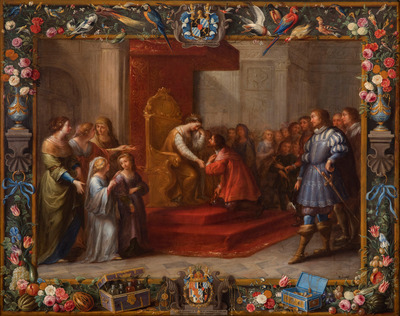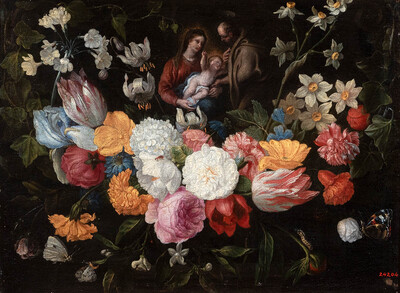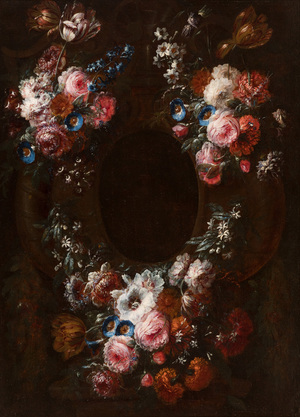The rebirth of the garland in painting
Originally from Greek and Roman antiquity, the garland as an artistic element became popular again in northern Europe thanks to the Flemish painter Jan Brueghel the Elder, who began to resume the use of those also known as borders, which although whose original objective was to frame, decorate and enhance a central image, they became true masterpieces of still life painting.

During the 17th century, Flemish painting developed, deriving from the genre of flower painting, a new formula that, recreated by a large group of artists and workshops, achieved outstanding success throughout the century in much of the field. European: the garland or border of flowers as a frame and enhancing element of a central theme of
religious character.
Brueghel de Velours, known as Brueghel the Elder, was the initiator of this type of composition, especially linked in his work to the representation of the Virgin with the Child.
However, it was his disciple, the Jesuit Daniel Seghers, who was the dominant figure in this specialized production and the creator of a prototype that would serve as a model for the numerous followers and imitators of the genre, Flemish and foreign. Note that, in this type of composition, the flowers are not simply a secondary element, or accessory, but are worked with the same care, and with the same quality as the image they usually frame. In fact, sometimes they show even one more hand
skilful, since these works were often the result of the collaboration of a painter of flowers and another specialized in the human figure.
Setdart presents this magnificent example of a border painting made by Jean-Baptiste Morel in the last third of the 17th century, and in which a great mastery can be seen in the floral composition, while in the center the space is empty, so it is very likely that the piece is completely unfinished, which makes it such a unique piece and allows us to appreciate the great quality that these painters had, often overshadowed by its central image.
Analyzing the structure of this flower garland by Morel, we observe that it adopts the ornamental oval or decorated niche. Originally from Greek and Roman antiquity, this architectural form had been well known since the Renaissance and fully accepted and applied in graphic arts and painting. The oval reached a great variety of shapes. It was chosen to endow a painting with elegance and category and it used to be captured surrounded by
garlands of flowers or fruit, as an autonomous and, fundamentally, decorative work of art. However, the meaning of a painting of this type could also be closely related to the subject treated in the center of it, which was used to underline the artist’s intention or perhaps give the painting a unique meaning, sometimes hidden, according to the wishes of the client who had commissioned it. A hybrid form, a combination of both genres, became very fashionable in Antwerp and Utrecht, probably introduced by Jan D. de Heem.
The floral repertoire that is combined in the work offers an attractive variety, identifying a good number of species: tulips, anemones, roses and chrysanthemums, among other floral species. A set that stands out in its wide color range, arranged on the black background that articulates the entire composition. It should be noted that, behind the flowers, especially in the central area, you can see the presence of an oval frame of
dark tonality, which serves as the basis for the floral crown that stars in the scene. Regarding said composition, despite the chromatic variety that the flowers present, it should be noted that, in those flowers that are found in the area of the outer perimeter, the author has
used darker shades, and even ochres. Thus indicating that the artist has used a spotlight, which falls directly on the center of the composition, leaving the lateral areas in a certain shadow.
In the case at hand, the oldest known versions of flower garlands around a central motif of a religious or allegorical theme are of Flemish origin. They can be considered the source of a tradition that was maintained for decades in the northern countries. From 1608 to the mid-17th century, collaborations on flower representations and central images between artists such as Jan Brueghel the Elder or Rubens and their respective workshops resulted in an enormous amount of
garlands of different types. Painters such as Daniel Seghers – a Jesuit who began his artistic career in Utrecht, then traveled through Italy for several years, before finally settling in Antwerp – introduced this style, characterized by the detailed representation of compositions full of flowers. Seghers devoted himself exclusively to painting religious-themed pictures with figures of saints or scenes from the
Passion and the Holy Bible.







